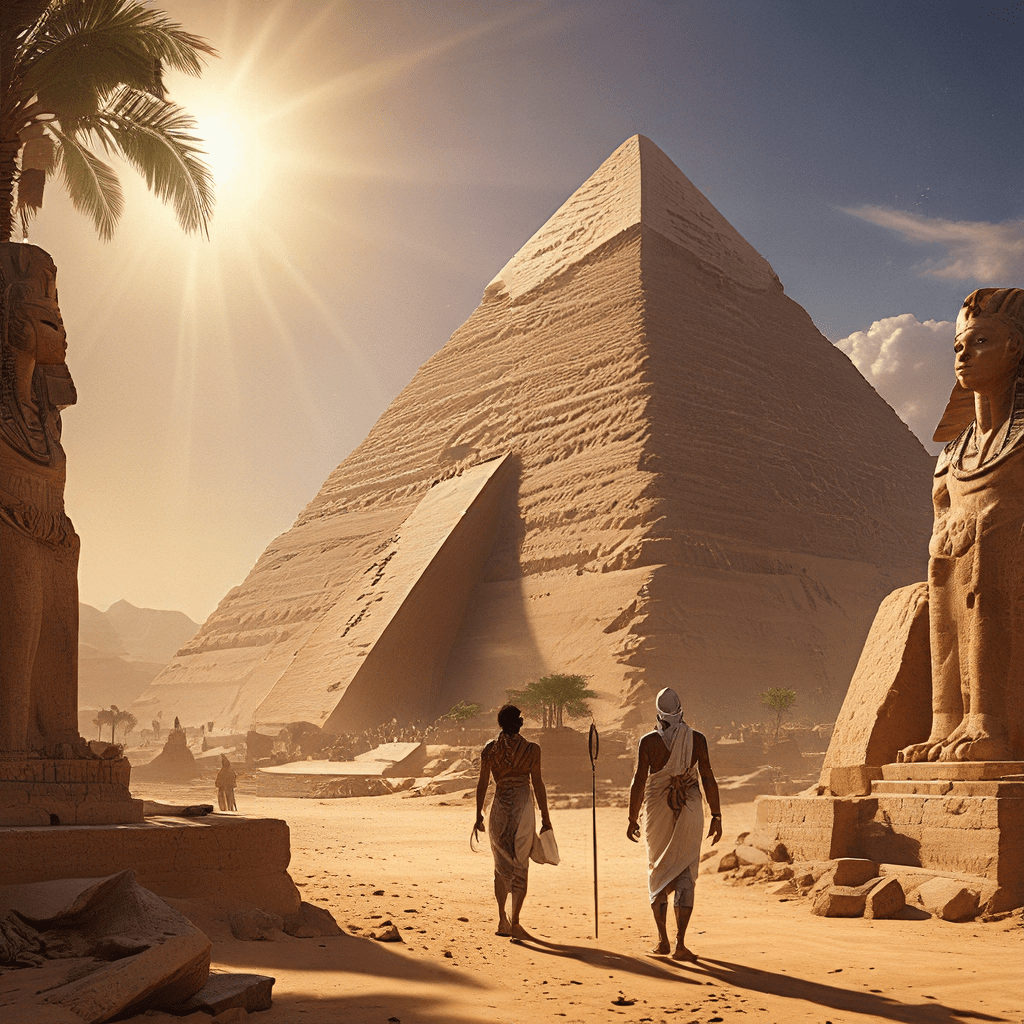Beyond the Pyramids: Unveiling the Hidden Secrets of Ancient Egyptian Magic
1. Introduction: The enduring allure of Egyptian magic
The ancient Egyptians, renowned for their monumental pyramids and sophisticated hieroglyphic writing, were also masters of magic. Their beliefs and practices surrounding the unseen forces of the universe continue to captivate our imaginations, weaving a spellbinding tapestry of mythology, rituals, and divine power. From the towering figures of gods like Ra and Osiris to the intricate amulets worn for protection, the legacy of Egyptian magic permeates our modern world through popular culture, literature, and even our fascination with the occult. In this exploration of ancient Egyptian magic, we’ll journey beyond the pyramids to unearth the hidden secrets of their mystical world.
2. Shaping the World: Magic as a Force of Creation
The ancient Egyptians believed that magic played a fundamental role in shaping the world around them. Their creation myths tell the story of a primordial deity, Atum, who arose from the primeval waters, giving birth to the universe through his own magical powers. The concept of maat, a divine order that governs all aspects of existence, was deeply intertwined with magic. Maat was seen as a force that maintained balance and harmony, and magic was used to both uphold and restore this order. In this way, magic became a powerful tool for maintaining cosmic balance, influencing the flow of nature, and even shaping the destinies of individuals.
3. Deities and Their Powers: The Pantheon of Magic
Within the Egyptian pantheon, each god and goddess possessed unique magical abilities. The sun god Ra, for instance, was believed to possess the power to create light and life, while the god Thoth was associated with knowledge, magic, and the power of language. The goddess Isis was revered for her healing powers and her ability to manipulate nature, while Osiris, the god of the Underworld, controlled the realm of the dead. Egyptian magic was often directed toward these deities through spells, rituals, and offerings, with the goal of influencing their favor and obtaining their assistance.
4. The Power of Words: The Magic of Spells and Incantations
The ancient Egyptians believed that words held immense power. They used hieroglyphs, their sacred writing system, to inscribe spells and incantations on amulets, papyrus scrolls, and temple walls. These spells were often written in rhythmic and poetic language, using specific formulas and symbolic imagery. The power of a spell was thought to reside in its pronunciation and the intention behind its utterance. Egyptian priests and sorcerers would often chant spells in a hypnotic rhythm, believing that the vibrations of their voices could influence the supernatural forces at play.
5. Rituals and Ceremonies: Connecting to the Divine
Temples and shrines served as sacred spaces for the performance of rituals and ceremonies. These elaborate gatherings were intended to connect with the divine and harness the power of magic. The Egyptians performed rituals for various purposes, including healing, fertility, protection, and even seeking guidance from the gods. These ceremonies often involved complex movements, offerings of food and incense, and the recital of sacred texts. The Egyptians believed that through these rituals, they could establish a link with the divine realm, influencing the course of events and obtaining divine favor.
6. Amulets and Talismans: Magic in Everyday Life
Amulets and talismans played a central role in everyday life, serving as tangible representations of magical power. These small objects, often made of precious metals, stones, or wood, were inscribed with protective symbols, deities, or powerful spells. People wore amulets as necklaces, bracelets, or rings, believing that they would ward off evil, protect against illness, and bring good fortune. Specific amulets were believed to have specific magical properties, with the scarab beetle, for instance, symbolizing renewal and resurrection, while the Eye of Horus was associated with protection and healing.
7. The Secrets of the Necropolis: Magic in the Afterlife
The ancient Egyptians believed that magic played a vital role in ensuring a successful transition into the afterlife. Funerary rituals were meticulously planned and executed, involving the use of magic to guide the deceased through the perilous journey to the Underworld. Spells were inscribed on sarcophagi and tomb walls, designed to protect the deceased from harm and guarantee a prosperous afterlife. The mummification process itself was considered a magical act, intended to preserve the body and allow the soul to reside in the afterlife.
8. Harnessing Nature: Magic and the Elements
The ancient Egyptians recognized the interconnectedness of the natural world and the supernatural. They saw magic as a force that could be harnessed from the elements, such as the sun, moon, stars, earth, air, and water. These forces were often personified as deities, and their power could be invoked through rituals, spells, and offerings. For example, the sun god Ra was associated with the power of healing and protection, while the moon goddess Isis was believed to control the tides and the forces of nature. By understanding and working with the elements, the Egyptians sought to harness their power for their own benefit.




